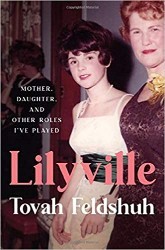By
– September 1, 2011
Sarah Bernhardt — the very name summons drama, and drama was the core of the divine actress’ work and life. In this initial volume of the Yale Jewish Lives series, Robert Gottlieb, the prominent editor and author, captures Sarah’s life in a brisk and lively capsule biography.
Born by an unknown father to a teenaged Jewish courtesan who quickly got Sarah out of her way, Sarah created her own life, achieving a brilliant career even as she embroidered and constantly redecorated the facts of her life. How then write her biography?
Whatever barriers and after-the-facts recollections Sarah erected to hide her origins and embellish her life, she could not hide her indomitable will. So putting aside irreconcilable facts and contradictory accounts, Gottlieb gives us Sarah the immortal actress, the patriot, the mother.
And it is a fabulous story. Although the story of her career starts with lackluster reviews for her debut performances, it sweeps through her triumphant tours, dazzling worldwide audiences with her performances, all in French, and finally running her own theater. During the Franco-Prussian War she set up a fully stocked hospital in a theater; during World War I she undertook a ninety-nine-city American tour to encourage the United States to support the Allied effort. Despite a lonely childhood she was devoted to all the members of her family, especially her spoiled and beloved son. She flew in a hot-air balloon, collected wild animals, slept in a coffin and the beds of almost every man she met, from kings to fellow actors, and insisted, in her seventies, on having her painful right leg amputated. Baptized a Catholic in childhood, she suffered many anti-Semitic attacks but did not flinch from her Jewish background, standing up for Alfred Dreyfus during his trial. In all a dramatic life so universally recognized that her epitaph simply reads, “Sarah Bernhardt, 1844 – 1923.”
Sarah is generously illustrated, giving readers a look at Sarah’s life and the extraordinary range of her roles from La Dame aux Camélias to Hamlet, from Racine to Rostand, all played in high classical style. Whatever the facts of Sarah’s life, Gottlieb tells a stylish story, conveying the brilliance and force of this legendary woman. Bibliography, illustrations, index, note on sources, photographs.
Whatever barriers and after-the-facts recollections Sarah erected to hide her origins and embellish her life, she could not hide her indomitable will. So putting aside irreconcilable facts and contradictory accounts, Gottlieb gives us Sarah the immortal actress, the patriot, the mother.
And it is a fabulous story. Although the story of her career starts with lackluster reviews for her debut performances, it sweeps through her triumphant tours, dazzling worldwide audiences with her performances, all in French, and finally running her own theater. During the Franco-Prussian War she set up a fully stocked hospital in a theater; during World War I she undertook a ninety-nine-city American tour to encourage the United States to support the Allied effort. Despite a lonely childhood she was devoted to all the members of her family, especially her spoiled and beloved son. She flew in a hot-air balloon, collected wild animals, slept in a coffin and the beds of almost every man she met, from kings to fellow actors, and insisted, in her seventies, on having her painful right leg amputated. Baptized a Catholic in childhood, she suffered many anti-Semitic attacks but did not flinch from her Jewish background, standing up for Alfred Dreyfus during his trial. In all a dramatic life so universally recognized that her epitaph simply reads, “Sarah Bernhardt, 1844 – 1923.”
Sarah is generously illustrated, giving readers a look at Sarah’s life and the extraordinary range of her roles from La Dame aux Camélias to Hamlet, from Racine to Rostand, all played in high classical style. Whatever the facts of Sarah’s life, Gottlieb tells a stylish story, conveying the brilliance and force of this legendary woman. Bibliography, illustrations, index, note on sources, photographs.
Maron L. Waxman, retired editorial director, special projects, at the American Museum of Natural History, was also an editorial director at HarperCollins and Book-of-the-Month Club.



